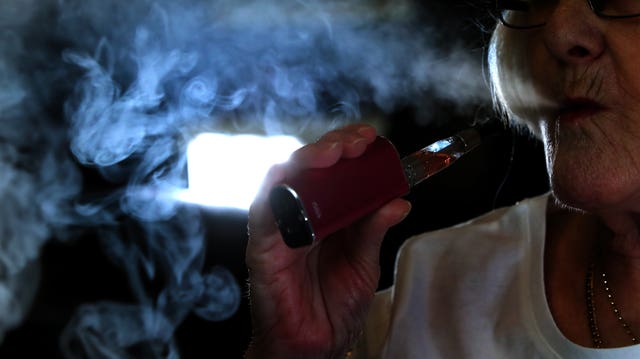US medics have come up with a set of guidelines to help identify and treat patients for lung injuries associated with vaping and e-cigarettes.
The recommendations, published in the journal Lancet, come after the US Centres for Disease Control and Prevention (CDC) confirmed two more vaping-related deaths this week, taking the total death toll to 39.
Lead author Dr Denitza Blagev, a pulmonary and critical care physician at Intermountain Healthcare – a not-for-profit healthcare system in the US – said: “This is still an ongoing outbreak and not something we’ve seen with vaping before.”
The guidelines – which provide details on how to diagnose and treat patients – are based on research gathered from 60 patients at Intermountain’s hospitals and clinics across the country.
The recommendations include shorter courses of moderate-dose steroids for patients either treated as outpatients or admitted to hospitals.
For those who are critically-ill on admission, the researchers advise giving higher doses of intravenous steroids that are tapered more slowly.
Dr Blagev said: “Through sharing the guideline, we are reaching clinicians and keeping e-cigarette or vaping-associated lung injury on everyone’s minds, especially as we enter flu season and diagnosing vaping-associated lung injury becomes more challenging.

Study participants diagnosed with vaping-related lung injuries showed flu-like symptoms, shortness of breath, coughing and chest pain.
Abdominal symptoms such as nausea, vomiting and abdominal pain were also reported.
According to the medics, chest x-rays of these patients revealed abnormalities in the lungs that are usually associated with pneumonia, fluid in lungs or lung inflammation.
The test subjects were reported to have used e-cigarettes within 90 days of the symptoms appearing.
Most of them were treated with oxygen and steroids, along with a course of antibiotics due to overlapping pneumonia symptoms.
While more than half of the patients were admitted to an intensive care unit, the researchers said most of them recovered quickly following steroid treatments.

Among the patients who were readmitted to the hospital, most of them had been critically ill when they initially came in for care and half of them had resumed vaping after discharge, researchers reported.
Of 26 patients who were followed up within two weeks, 10 of them had residual abnormalities in their lungs.
Two patients died and lung injury associated with e-cigarettes or vaping was thought to be a contributing factor, but not the cause of death, for both, the researchers wrote in their paper.
According to the medics, their findings show what lung injuries associated with e-cigarettes or vaping look like.
While the majority of the patients vaped THC, a psychoactive compound in cannabis, some reported only vaping nicotine.
As the cause of e-cigarette or vaping-associated lung injury still remains unknown, the researchers are advising avoiding all vaping exposure.
Last week we published a blog all about #vaping and why our advice on e-cigarettes remains the same despite headlines in the US. Read it here: https://t.co/1ZbcTavySL pic.twitter.com/i5JklAkjKC
— Public Health England (@PHE_uk) November 5, 2019
Dr Blagev said: “Time will show us the long-term outcomes and the cause of this new disease, but in the meantime, the surest way to prevent lung injuries associated with e-cigarettes, or vaping, is not to vape.”
In the UK, Public Health England (PHE) stands by its claim that vaping is 95% less harmful than smoking.
It maintains that e-cigarettes containing nicotine are more tightly regulated in the UK than in the US and that main chemicals under suspicion in the US such as THC and Vitamin E acetate oil are not permitted in e-cigarettes in the UK.
Professor John Newton, director of health improvement at PHE, recently wrote in a blog post: “We are keen to understand more about what is happening in the US, so we are in regular contact with US federal agencies including the CDC, the Food and Drug Administration (FDA) and the National Institute on Drug Abuse (NIDA).”






